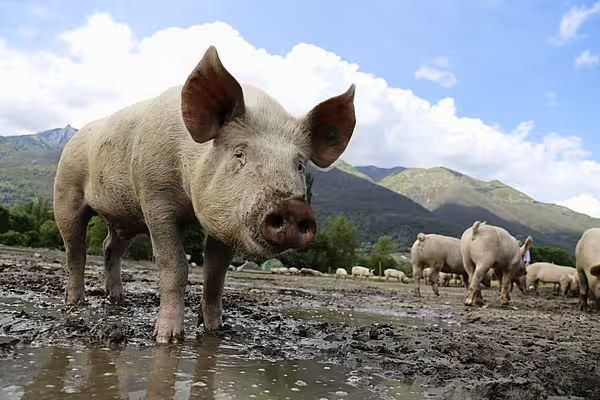Struggling European pig farmers might want to look east for a glimpse of recovering demand.
Chinese imports from the European Union have started increasing, according to grain trader Cefetra BV, which could support prices near a five-year low in Germany. The sales are coming after tougher Chinese regulation of pig farms caused the nation’s herd to shrink by 100 million in the past two years, a number equal to all the pigs in the US, Mexico and Canada combined, Cefetra said.
Pigmeat prices slid 10 per cent in the EU in the past year after Russia banned imports in retaliation for sanctions over its involvement in Ukraine, while bigger herds led to oversupply. In contrast, Chinese prices have jumped after the nation pushed out smallholders by closing or moving farms in response to stricter rules on waste. The country consumes half the global pig total and European supplies account for about 80 per cent of its imports.
"When you look at pig prices in Europe and China, there’s a massive gap, so China could become a large pigmeat importer," Harm de Wilde, a senior market analyst at Cefetra, said in an interview at the Cereals Europe conference in Geneva on Friday. "Chinese imports could potentially bring better prices and more demand for the EU."
EU Aid
Lower hog prices helped spur the European Commission to announce an emergency aid package for farmers last year. In China, pig prices surged a record 61 per cent in the first quarter, the biggest jump in Shanghai JC Intelligence Co. data going back to 2011.
The country’s imports will rise 26 per cent to 1.3 million metric tonnes this year after climbing 35 per cent in 2015, the US Department of Agriculture’s Foreign Agricultural Service said in an 5 April report.
The Chinese herd has dropped as local governments shuttered or relocated pig farms, especially those near densely-populated areas, after a law was introduced last year that penalizes breeders who mishandle waste.
The USDA has a more conservative estimate on China’s herd decline than Cefetra. It estimates final headcount this year at 420 million, down about 46 million since 2014.
China will probably prefer buying from the EU because most most pigs there aren’t given medication to promote growth, like they are in the US, De Wilde said. While Chinese imports of European pigmeat have started to increase, it will take time for the Asian country to keep approving additional EU slaughterhouses to meet requirements for shipping to China, he said.
News by Bloomberg, edited by ESM. To subscribe to ESM: The European Supermarket Magazine, click here.














